The width of a vanity light in relation to the vanity itself is a key aspect of bathroom design that impacts both aesthetics and functionality. Choosing the correct size for your light ensures balanced illumination and contributes to the overall harmony of the space. This consideration is crucial in creating a bathroom that is not only practical for everyday use but also visually appealing. In the following sections, we will explore the factors that influence this decision, guidelines for determining the ideal width of lights, and how the size of the mirror plays into these considerations.
Factors to Consider
Selecting the width of a light compared to the vanity, several factors come into play. These include the size of the bathroom, the width and design of the vanity itself, the placement and size of the mirror, and the desired intensity and spread of the bulb. The aesthetic style of the bathroom and the light fixture also influence this decision, as the light should complement the overall design theme. Balancing these elements is key to achieving a cohesive and functional bathroom environment.
Ideal Width for Vanity Lights
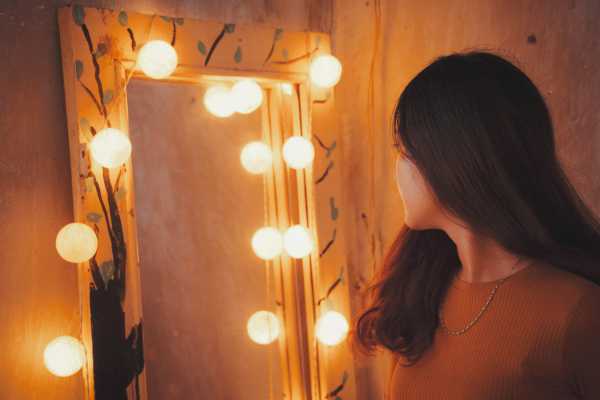
As a general rule, the width of the light should be approximately one-third to two-thirds the width of the vanity to create a balanced look. For example, for a vanity that is 60 inches wide, a bulb that is 20 to 40 inches wide would be appropriate. This guideline helps to ensure that the light is proportional to the vanity, providing sufficient illumination without overpowering the space. In cases where the vanity is exceptionally wide, considering multiple lights or a fixture with several bulbs may be necessary to achieve even lighting across the entire area.
Mirror Size and Vanity Light Width
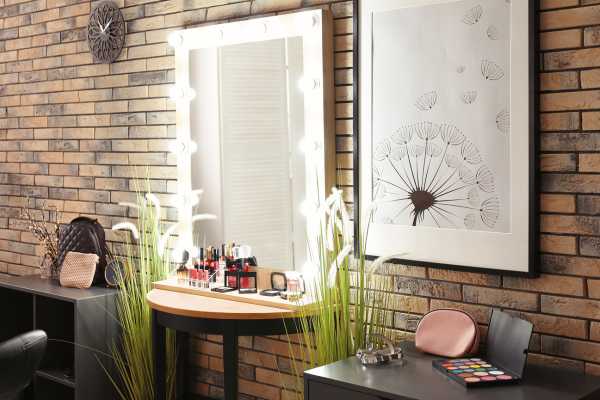
The size and placement of the mirror above the vanity also play a crucial role in determining the appropriate width for lights. Ideally, the light fixture should not extend beyond the width of the mirror, as this can create uneven lighting and detract from the visual symmetry of the space. If the mirror is large and spans most of the vanity’s width, choosing a bulb fixture that matches the mirror’s width can provide a cohesive and polished look. Conversely, for smaller mirrors or those centered above the vanity, selecting a light fixture that aligns with the mirror’s width while adhering to the one-third to two-thirds rule can ensure a well-balanced design.
Vanity Size and Light Placement

The size of your vanity directly influences the appropriate width of your light fixture, as well as its placement. A well-proportioned light fixture enhances the functionality and aesthetic of the area. For optimal illumination, the bulb should be placed just above the mirror to evenly distribute light across the face, reducing shadows for activities like applying makeup or shaving. The width of the light fixture typically should not exceed the width of the vanity. For larger vanities, consider installing two smaller fixtures on either side of the mirror or a single, wider bulb fixture that spans two-thirds of the vanity’s width, ensuring balanced lighting and visual appeal.
Brightness and Ambiance
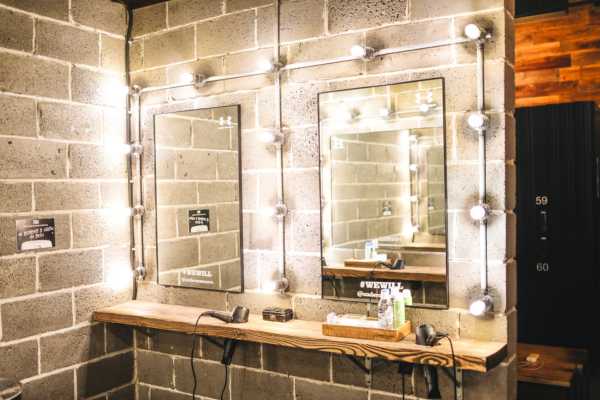
The brightness and ambiance created by the light are vital for a bathroom’s overall feel and functionality. The width of the bulb affects its brightness and the ambiance of the space. A wider light fixture with multiple bulbs can offer greater brightness, making it suitable for tasks requiring precision. Dimmer switches allow for adjustable brightness levels, catering to different times of the day and specific needs, such as relaxing in the bath versus getting ready in the morning. The color temperature of the bulbs also plays a role in the ambiance, with warmer tones creating a cozy feel and cooler tones providing a more natural daylight effect.
Style and Aesthetics

The style and aesthetics of the light should complement the bathroom’s overall design theme. A light fixture can influence the bathroom’s visual harmony; a fixture that is too wide can overwhelm a small table, while one that is too narrow may look disproportionate to a large vanity. The materials, finish, and design of the bulb fixture should align with the style of the vanity and bathroom decor, whether it’s modern, traditional, industrial, or minimalist, to create a cohesive and attractive space.
Common Mistakes to Avoid
Choosing the width of your light compared to the vanity, there are several common mistakes to avoid. One of the most frequent errors is selecting a bulb fixture that is either too wide or too narrow for the table, disrupting the balance and proportion of the space. Overlooking the importance of the light’s placement can result in inadequate lighting or shadows, hampering functionality. Ignoring the style and finish of the bulb fixture in relation to the rest of the bathroom’s decor can lead to a disjointed aesthetic. Lastly, not considering the practical aspects of lighting, such as brightness and the ability to control it, can affect the comfort and usability of the bathroom.
DIY vs. Professional Installation
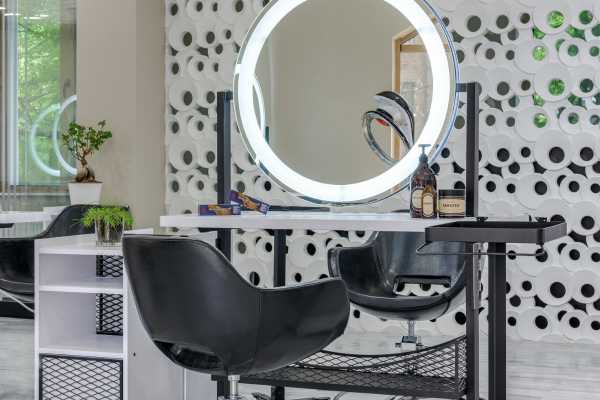
Deciding whether to install a vanity bulb on your own or to hire a professional, consider your level of comfort with electrical projects and the complexity of the installation. DIY installation can be a cost-effective option for those familiar with basic wiring and electrical safety. It offers the satisfaction of personal accomplishment and the flexibility to work on your own timeline. However, professional installation is recommended for those who are unsure about dealing with electrical components or when the project involves complex wiring, adding new electrical circuits, or adhering to specific building codes. Professionals can ensure the installation is safe, up to code, and correctly integrated with your home’s electrical system, which is particularly important for larger lights or custom configurations.
Cost Considerations
The width and style of the light you choose can significantly impact the overall cost of the fixture. Wider, more elaborate fixtures typically come with a higher price tag due to the increased materials and craftsmanship involved. Additionally, if you opt for professional installation, labor costs will need to be factored into your budget. However, investing in a quality bulb can enhance the bathroom’s aesthetics and functionality, potentially increasing your home’s value. When considering cost, also think about the long-term savings associated with energy-efficient lighting options, which can offset initial expenses over time.
Energy Efficiency

Selecting an energy-efficient vanity light is important for both environmental considerations and reducing electricity costs. LED lighting is a popular choice due to its lower energy consumption, longer lifespan, and lower heat output compared to traditional incandescent bulbs. The width of the bulb can influence energy efficiency; a wider fixture with multiple LED bulbs may provide ample light while using less energy overall than older, narrower fixtures with incandescent bulbs. When choosing a bulb, look for energy-efficient models and consider the fixture’s compatibility with energy-saving bulbs to maximize efficiency and sustainability.
Maintenance and Care
Maintaining and caring for your light will ensure it continues to function effectively and remains visually appealing. The maintenance requirements can vary based on the fixture’s material and design. Generally, regular dusting and occasional cleaning with a soft, damp cloth can keep most lights looking their best. For fixtures in humid environments like bathrooms, it’s important to check for signs of corrosion or electrical issues periodically. Energy-efficient and LED bulbs typically require less frequent replacement, making them a convenient option for lights. Following the manufacturer’s care instructions can help prolong the life of your fixture and maintain its aesthetic appeal and functionality.
Adapting to Different Spaces
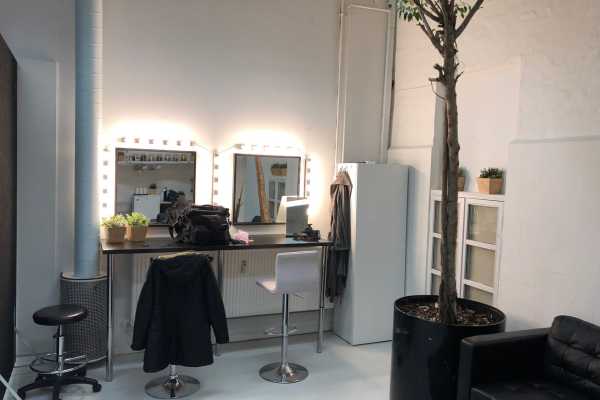
Determining how wide your light should be in comparison to your vanity, it’s essential to consider the unique characteristics of your bathroom space. In smaller bathrooms, a more compact bulb fixture that closely matches the width of the vanity can help maintain proportion and balance without overwhelming the space. For larger bathrooms with more expansive vanities, wider bulb fixtures or multiple lights can be used to ensure adequate illumination. The key is to maintain a harmonious scale that complements the dimensions of both the vanity and the overall bathroom.
Innovations and Trends
The world of bathroom design is constantly evolving, with innovations and trends influencing the choice of lights. LED technology, for example, offers energy-efficient lighting solutions that can be tailored to fit a wide range of vanity widths. Smart lighting systems enable users to control brightness and color temperature, adapting the lighting to different tasks and moods. Current trends also show a move towards more minimalist and sleek designs in bulb fixtures, which can be paired effectively with vanities of all sizes to create a modern and cohesive look.
What if My Mirror is Wider Than My Vanity?
Mirror extends beyond the width of your vanity, it’s important to select a light that complements this configuration. Ideally, the bulb should not exceed the width of the vanity to avoid an unbalanced appearance. However, it can be centered above the vanity to align with the central portion of the mirror, providing focused illumination where it’s most needed. This approach maintains visual symmetry and ensures that the bulb effectively serves its purpose without clashing with the broader dimensions of the mirror.
How Can I Minimize Glare from Vanity Lights?
Minimizing glare from lights involves careful selection and placement of the fixtures. Frosted or opal glass shades can diffuse bulb, reducing direct glare, while still providing ample illumination. Placing lights at eye level or slightly above can also help prevent glare in the mirror, offering a more flattering bulb for grooming tasks. Additionally, choosing bulbs with a lower lumen output or installing a dimmer switch can allow for adjusting the brightness to comfortable levels, further reducing the potential for glare.
Can I Mix Different Styles of Vanity Lights?
Mixing different styles of lights can add character and depth to your bathroom decor, as long as it’s done thoughtfully. Combining fixtures should be approached with a cohesive design plan in mind, considering factors like finish, color, and overall aesthetic. When executed correctly, mixing styles can create a dynamic and personalized space. However, it’s important to ensure that all lighting provides consistent and sufficient illumination across the vanity, regardless of the stylistic variations.
Conclusion
Choosing the correct width for lights relative to the vanity involves considering the unique aspects of your bathroom space, current design trends, and practical needs. Whether facing challenges like a wider mirror or seeking to minimize glare, there are strategies and solutions to address these issues while maintaining style and functionality. Mixing different styles of lights can offer a personalized touch, provided there’s a cohesive design strategy. Ultimately, the goal is to achieve a well-lit, harmonious bathroom space that meets both aesthetic and practical demands.
